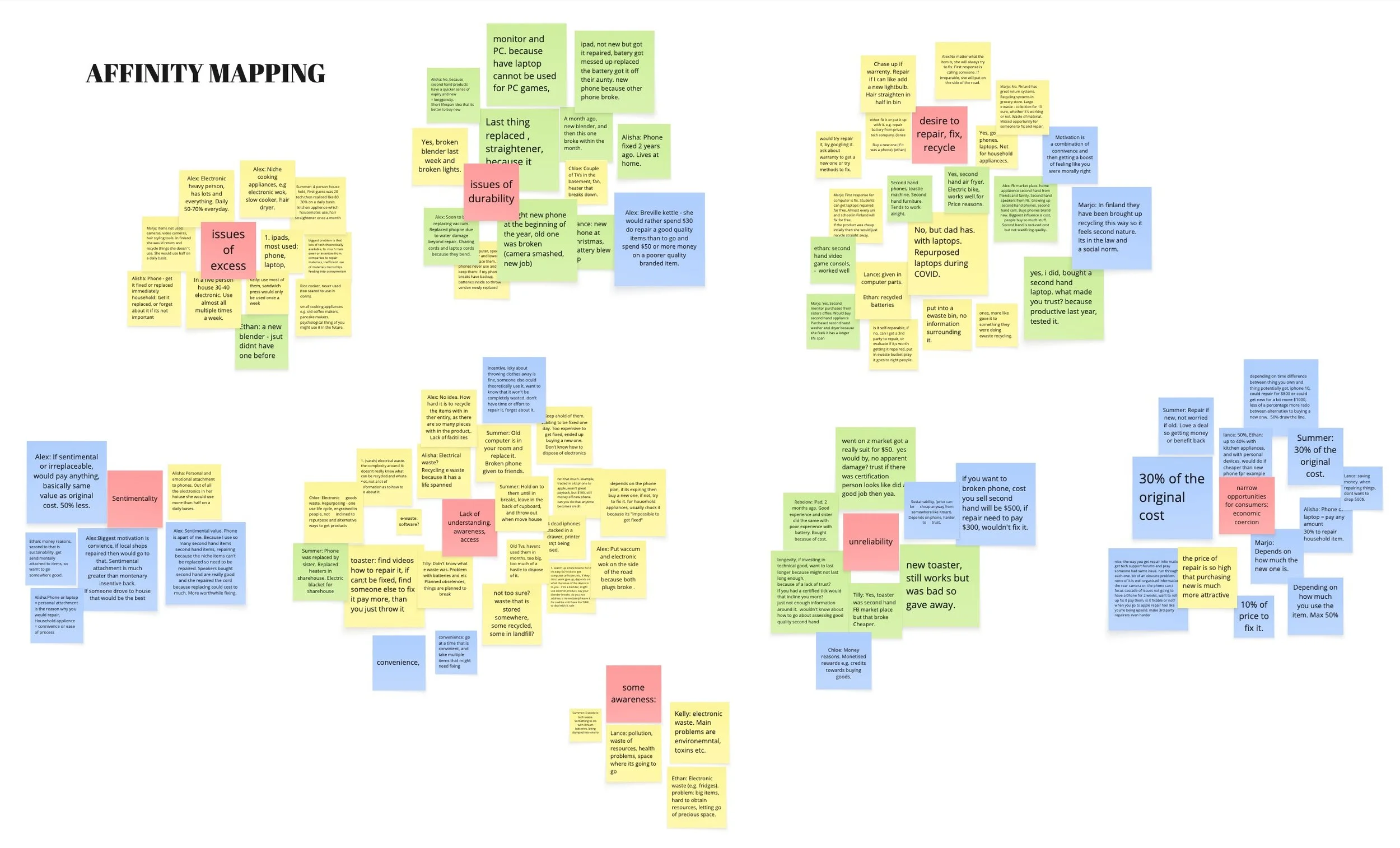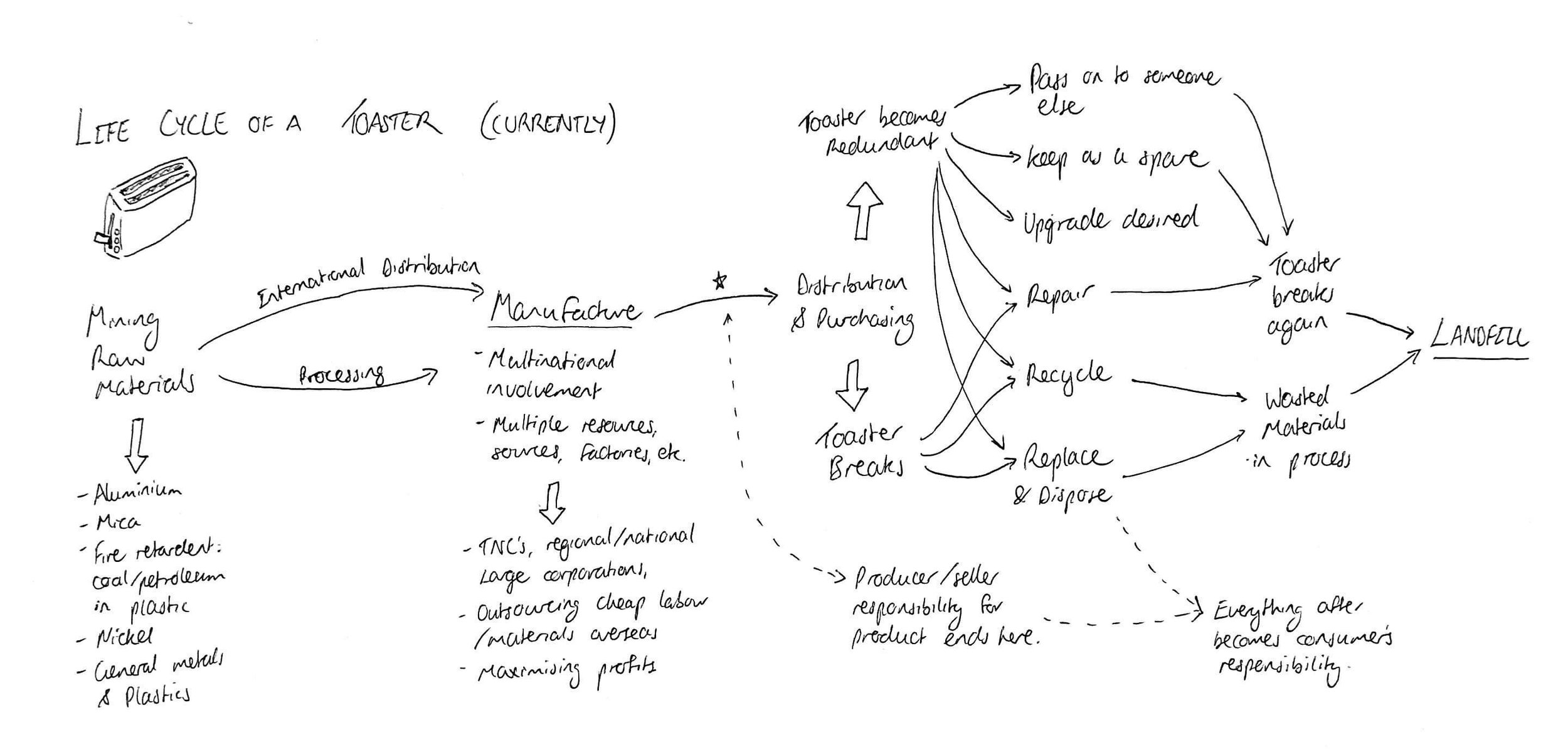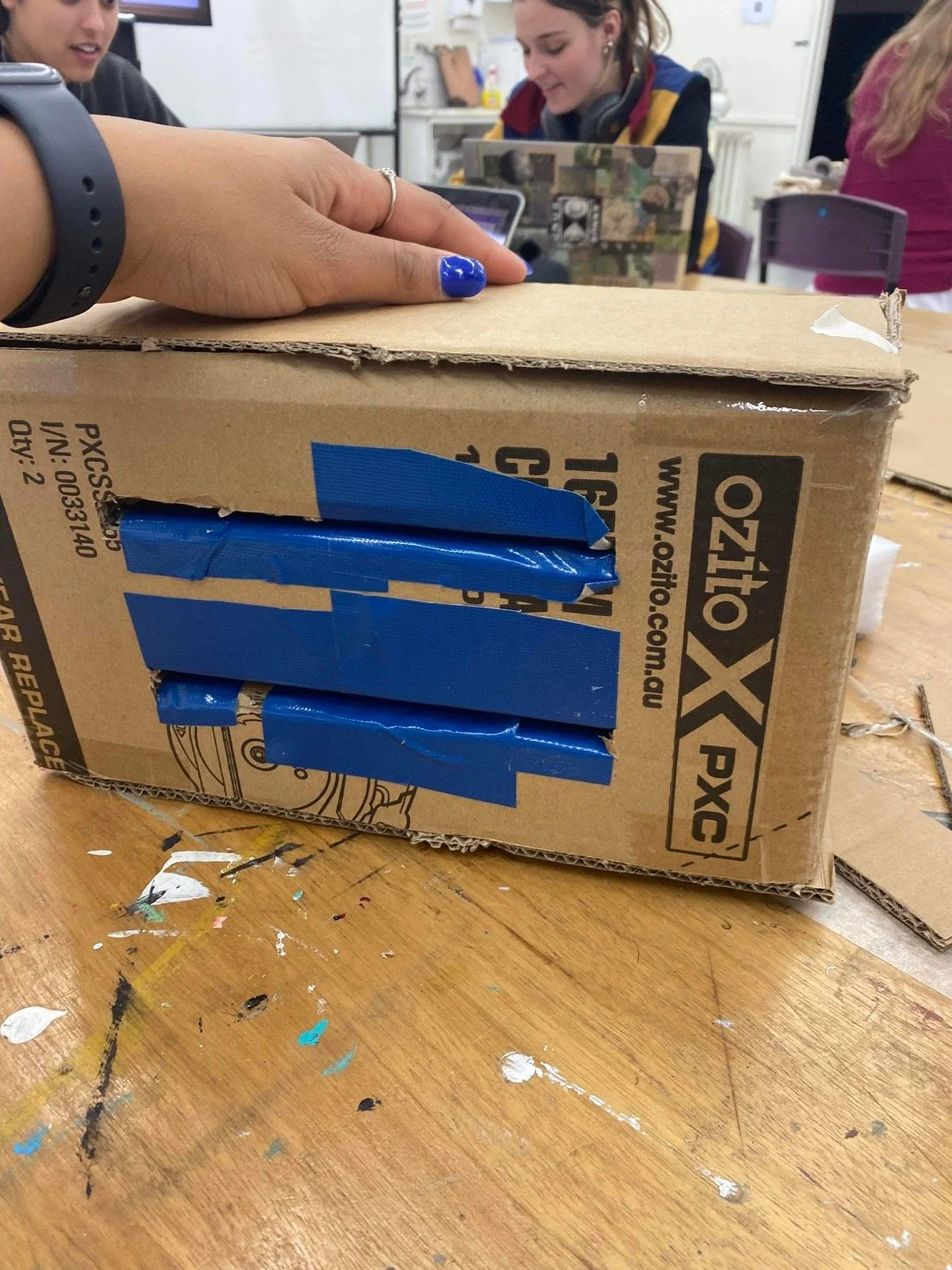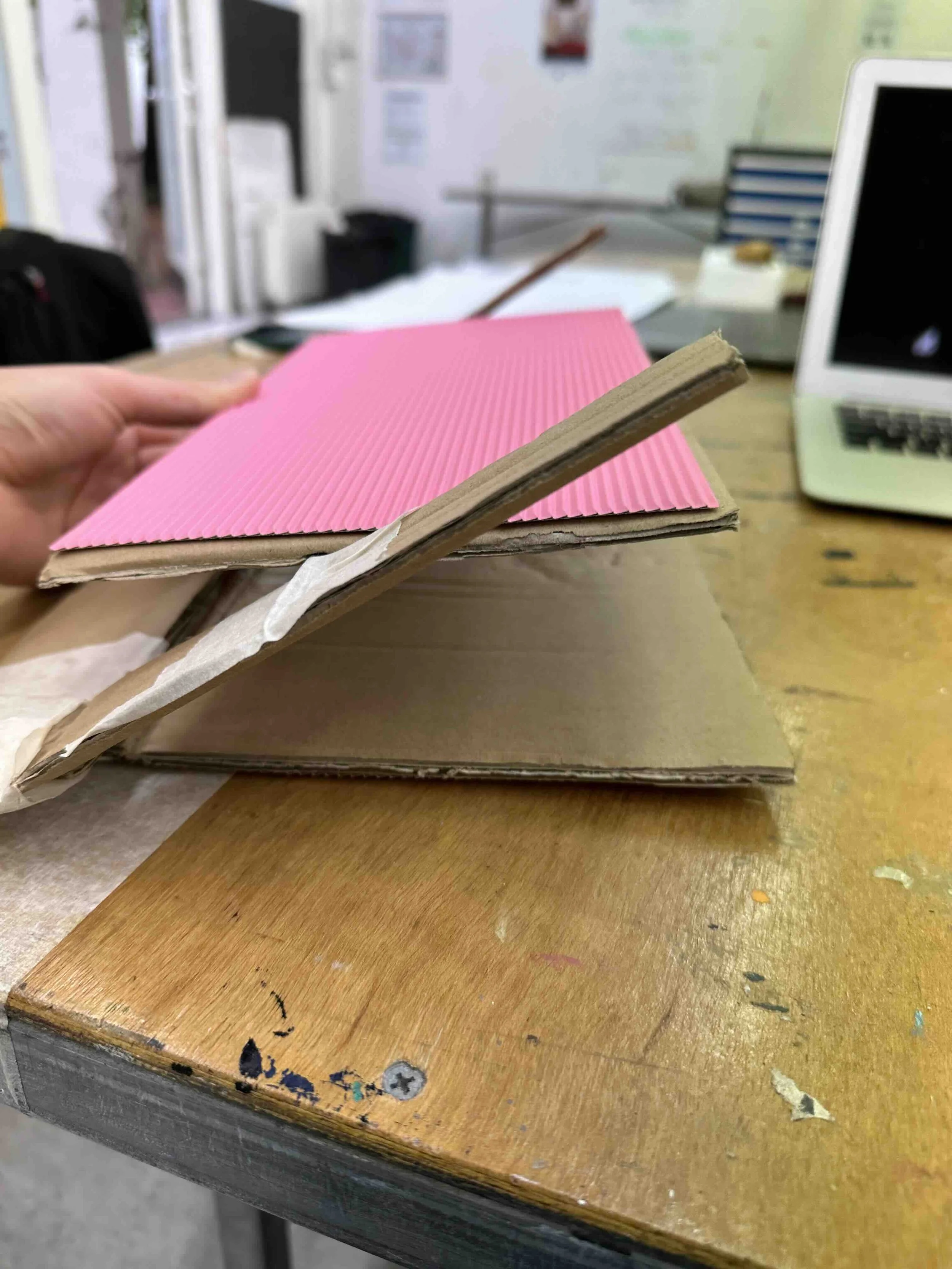TACKLING E-WASTE:
MODULAR AND REPAIRABLE APPLIANCE DESIGN
University Design Thinking Course.
Group Project, 2023.
BRIEF
Working in a team of 4
Select a ‘wicked problem’; we chose the issue of e-waste.
Utilise design thinking and human-centred design methodologies such as rapid iteration, prototyping, co-design, and user research to develop an output or solution for the chosen problem space.
OUTPUTS
Modular toaster design, designed to be fixed instead of replaced.
Circular business model founded on repairability, recycling and recapturing value from products at their end-of-life to offer an alternative to the ‘cradle to grave’ norm in appliance design.
Speculative legislation design.
E-Waste is the fastest growing waste stream globally.
But where do we intervene in such a complex issue?
USER RESEARCH:
Surveys and synthesis of findings.
PROBLEM IDENTIFICATION
Small household appliances:
Neglected area in the e-waste issue
High repair costs
Cheap replacement costs
Lack of opportunities for recycling
Status quo of ‘design for disposal’ within the industry
PROBLEM STATEMENT
With a focus on small household appliances, how might we alleviate the e-waste problem by changing consumer habits and mindsets, increasing product durability, and reimagining the product lifecycle?
IDEATION
LOW FIDELITY PROTOTYPING
USER TESTING
Collecting feedback, design iteration.
HIGH FIDELITY PROTOTYPING
3D PRINTING
Self-taught Fusion360 software for 3D modelling and printing.
FINAL DESIGN
DURABILITY
Hot plate style heating instead of wires
Base opens to release crumbs
Simplified user interface
LONGEVITY
Entirely modular: broken parts can be individually replaced without forsaking entire unit
Changeable colour case to evolve with owner’s preference
CIRCULAR BUSINESS MODEL
Illustrates how an appliance company could recapture value from old products returned by customers.
Increasing ease and accessibility for consumers to repair and properly recycle their appliances.





















